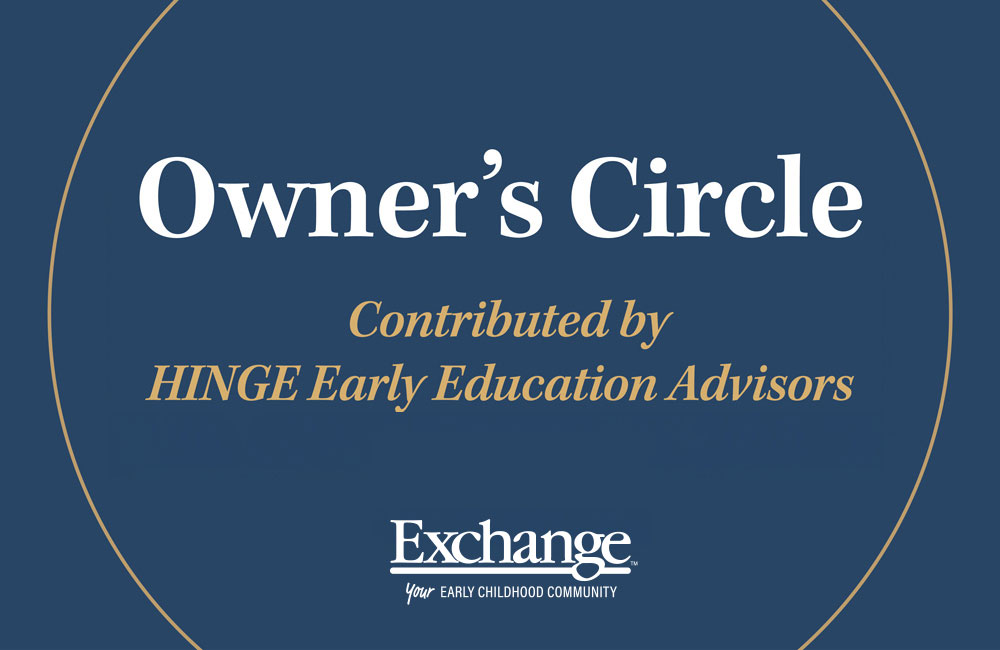Child care and early childhood staff recruitment, training, and retention have a long history of being complex issues, which have only been magnified following the pandemic. A recent survey conducted by the National Association for the Education of Young Children indicated that 56 percent of child care centers are losing money each day they can remain open (Bohlen, 2020). NAEYC also reported the following alarming findings:
“Four out of every five child care centers said that they had a staffing shortage, and 78 percent of respondents identified low wages as the main obstacle to recruitment of educators, while 81 percent said it is the reason they leave.”
More than one in every three respondents said they were considering leaving or shutting down their child care programs this year, and over half of minority-owned programs are reckoning with the possibility of permanent closure” (NAEYC, 2021).
This is not solely due to staffing concerns. Lack of staffing consistency, training, and retention are large contributors to the state of child care in the United States. Without appropriately trained and supported staff, programs are struggling to not only stay open, but to provide the kind of high-quality care needed for young children.
Many centers and owners are going to extremes to stay open, including using personal funds and credit cards, using their own savings or other financial resources, and having to layoff staff, reduce hours, or reduce services offered to families (Bohlen, 2020). Early childhood centers remaining open is a critical piece needed to keep the U.S. economy and working families afloat. Without appropriate child care, many families have been forced to leave their jobs, reduce their hours, or use less-than-adequate care situations. At this point in history, “the situation is dire for child care providers” (Bohlen, 2020). Addressing the issues of recruitment, retention, and supportive professional development is an ongoing task of those in the field of early childhood and the importance of these has never been more paramount.
Recruitment and Retention of High-Quality Staff
Simply having “staff” is not sufficient, as it is well known the vital role that early care providers play in overall development of children (NAEYC, 2020). A well-balanced and well-supported staff comes from intentional and explicit efforts to recognize and uplift those who have chosen to work with young children. Inadequate wages, a lack of benefits and professional development, and the low level of respect for many who choose to work in early childhood continues to contribute to the staffing shortages, as well as the stress experienced by current staff in programs. Post-pandemic, reduced staff has led to increased responsibilities for those who are employed, increased hours, fewer opportunities for time off and reflective professional support, and increased stressors (Brazier, 2021). “Turnover Tsunami” details the danger companies face of losing staff, not being able to fill positions, and not being able to help staff maintain a livable work/life balance. Without adequate child care, families will suffer, as will the workforce, because “providing support for families who have children is crucial to the structure of the country” (Brazier, 2021). With this in mind, how do we support the staff we are fortunate enough to have, recruit new and talented educators to our programs, and provide ongoing development to ensure best practices for young children?
Staff Recruitment Initiatives and Motivation
Finding qualified staff can be an ongoing issue, especially when there are ample open positions in a variety of fields and many that offer substantially higher wages than working in child care. We are experiencing more dramatic staff shortages than ever before; the phrase child care desert describes areas where there are far too few slots available in licensed child care programs. Recognizing that there are not enough child care spaces for children and families is a piece of the staffing puzzle. The impacts of reduced child care options, fewer qualified and properly trained staff to work, and an ever-increasing number of responsibilities for those working in child care adds up to a perfect storm. Being intentional in staff recruitment begins with acknowledging the very challenging positions that need filling.
A look into human motivational theory can help identify factors that assist in the recruitment of new employees and enhance support of existing staff. Alderfer’s ERG theory placed high importance on existence, recognition, and growth. Humans can fluctuate between these needs at any given time, depending on the situation. McClelland noted that individuals are driven by achievement, affiliation, power, or a combination of these. This theory also discussed the importance of challenge for those driven by achievement. Sirota’s theory focused on three factors that contribute to motivation; equity and fairness, camaraderie, and achievement. Finally, Herzberg’s theory highlighted the importance of achievement, recognition, the work itself, responsibility, advancement, and growth. The consistent themes among these theories include the need for community and relationships, the importance of being able to achieve and grow personally and professionally, and the importance of being recognized for contributions made.
ADVERTISEMENT
With wages as an issue for both keeping staff employed and attracting new staff, increasing salaries seems like a never-ending quest. However, there are other ways center administrators and owners can provide support and motivation:
- Partner with institutions of higher education to create viable pathways to complete/further education. Often, with an advanced degree, there can be increased opportunities for career advancement. High school pathways and dual credit programs can provide needed education, as well as pathways for new employees.
- Provide time and space for personal and professional reflection and advancement.
- Maintain awareness of the many demands on staff both personally and professionally. Consider using community resources and intentional partnerships to provide for the many human needs that can so often get sidetracked by an overloaded schedule. If higher wages are not an option, locate other resources to meet needs that are not solely financial. These can include:
- Meaningful and mindful partnerships. Different stakeholders have a variety of resources that can be an integral part of providing for employee needs. For example, partner with a university education department to host professional development events and invite employees and staff. You could also consider building reciprocal relationships with institutions of higher education that include meaningful field placement activities. These provide crucial in-class experiences for teacher candidates, as well as support for child care centers.
- Empathy and Flexibility. Directors and administrators can use motivational theory to understand each employee and the distinct needs they have. Knowing that many are driven by the need for recognition and community, consider ways to recognize those doing amazing work. Partner with community businesses to provide gift cards or free coffee for employees. Offer ways for parents and families to show their support and appreciation for staff with notes for employees and a monthly recognition of accomplishments. Use time as a motivator by offering a paid hour (or more) off when employees participate in professional development.
- Resources to reflect varying needs. A strong relationship with staff helps to identify the many needs individuals may have, including professional development resources such as books or classroom supplies, food options for those experiencing food insecurity, or gas cards and carpools for transportation.
- Food and supply pantry. Partner with local and community organizations to provide options for staff who may be struggling financially. Offer a resource room with personal hygiene and feminine products, which can be a large expense for employees.
- Therapy animals
- Yoga and meditation spaces
- Flexibility in dates, attendance, and format of meetings.
- Celebrations! Consider holding a celebratory event monthly or quarterly.
- Mental health focus days.
- Movement and fitness. Collaborate with local gyms or fitness professionals to provide fitness and healthy movement classes or resources.
- Literature and outdoor spaces for personal reflection and brain breaks.
- Promoting staff and provide advancement opportunities from within. Work with individual strengths to identify leadership opportunities. Consider inviting peers to lead development workshops and take ownership of the planning and implementation with fellow staff. This demonstrates trust and acknowledgement of their professionalism and knowledge base.
- Staying within state-guidelines and uphold policies that protect employees. Understanding parent and family needs is important, however, policies in place to support and protect employees must be consistently enforced and upheld. This includes late pick-up and child-to-staff ratios, both of which can be stress-inducing for employees with their own families and other responsibilities outside of work.
- Activities to combat boredom and frustration. Welcome a visiting musician to work with children, or use community resources to provide differentiation to the daily schedule. This could include a visit from the fire department, a visit from a local librarian, a parent with a hobby to share, or a classroom garden. These diversions can often provide a needed distraction for staff, while providing appropriate and engaging experiences for children. Consider tasking staff with scheduling these enrichment activities, to share ownership and buy-in.
- Flexibility. The majority of those who work with humans, in any capacity, need to recognize the importance of flexibility. Seeing employees as humans with needs and strengths is a great step toward building solid relationships in the workplace.
- Involving employees in seeking solutions. Listen to ideas, generate strategies at large and small group brainstorming sessions, use staff meetings to support and uplift employees and find areas to continue to develop as a group. Listen to those in your organization.
- Utilizing available state and national grant and education support programs to offer financial relief, materials or professional development. Contact your local child care referral agency for professional development opportunities.
As human motivational theory tells us, several factors contribute to our enthusiasm for joining an organization and/or staying there. Increased wages are not the only motivation! Being treated with respect and equity in their workplace, being recognized for their important and challenging work, and building strong and supportive relationships with colleagues and supervisors all contribute to employee happiness. Understanding that stress levels are at an all time high, supervisors and directors must approach employees with empathy and understanding and create pathways of support. Step by step, replace punitive measures with stronger communication, replace increased hours with increased support, and replace negativity with positive culture changes. Being seen and part of a supportive workplace community helps us all, even on our most stressful days.
References
Alderfer, C. (1972). Existence Related Growth: Human Needs in Organizational Settings. Free Press.
Bolen, W. (2020). You are Here. NAEYC.
Brazier, J. (2021). Tying Together Child Care Benefits with Employee Retention. Forbes Business Council.
Bredekamp, S. and Copple, C. (2020). Developmentally Appropriate Practice in Early Childhood Programs. NAEYC
Cao, W., Fang, Z., Hou, G., Han, M., Xu, X., Dong, J., and Zheng, J. (2020). The Psychological Impact of the COVID-19 Epidemic on College Students in China. Psychiatry Research, 287, 112934. https://doi.org/10.1016/j.psychres.2020.112934
Cole, K., Yves-Plasir, J., Reich-Shapiro, M., and Freitas, A. (2019). Building a Gender-Balanced Workforce: Supporting Male Teachers. NAEYC.
Edwards, K. and Loveridge, J. (2011). The inside story: Looking into early childhood teachers’ support of children’s scientific learning. Australian Journal of Early Childhood, 36(2), 28-35.
Eisenberg, D., Golberstein, E., and Hunt, J.B. (2009). Mental Health and Academic Success in College. The B.E. Journal of Economic Analysis & Policy, 9(1). https://doi.org/10.2202/1935-1682.2191
Fruehwirth, J.C., Biswas, S., and Perreira, K.M. (2021). The COVID-19 Pandemic and Mental Health of First-year College Students: Examining the Effect of COVID-19 Stressors Using Longitudinal Data. PLOS ONE, 16(3). https://doi.org/10.1371/journal.pone.0247999
Hamza, C.A., Ewing, L., Heath, N.L., and Goldstein, A.L. (2021). When Social Isolation Is Nothing New: A Longitudinal Study on Psychological Distress During COVID-19 Among University Students With and Without Preexisting Mental Health Concerns. Canadian Psychology/Psychologie Canadienne, 62(1), 20–30. https://doi.org/10.1037/cap0000255
Ketchen Lipson, S. (2020). Depression, Anxiety, Loneliness is Peaking in College Students. bu.edu
Lederer, A.M., Hoban, M.T., Lipson, S.K., Zhou, S. and Eisenberg, D. (2020). More Than Inconvenienced: The Unique Needs of U.S. College Students During the COVID-19 Pandemic. Health Education & Behavior, 48(1), 14–19. https://doi.org/10.1177/1090198120969372
Local Child Care Marketing (2021). 8 Effective Staff Retention Strategies for Child Care Centers. Dec. 10, 2021.
McClelland, D. (1976). The Achieving Society. Sydney, Australia, Halstead Press, Irvington Publishers.
Herzberg’s Motivators and Hygiene Factors. (n.d.). MindTools. mindtools.com
Ribera, A.K., Miller, A.L., and Dumford, A.D. (2017). Sense of Peer Belonging and Institutional Acceptance in the First Year: The Role of High Impact Practices. Journal of College Student Development, 58(4), 545–563. https://doi.org/https://doi.org/10.1353/csd.2017.2017.0042
Romero, C. (2015, July). What We Know About Belonging from Scientific Research. Mindset Scholars Network.
Sirota, D. and Klein, D. (2014). The Enthusiastic Employee. Pearson Education, Inc.
Writers, S. (2021, April 11). 95 Percent of College Students’ Mental Health Impacted by COVID-19. BestColleges. BestColleges.com
Molly Gerrish, Ph.D., is a full, tenured professor at the University of Wisconsin-River Falls. Gerrish is the academic program director of all early childhood programs and director of undergraduate research, scholarly, and creative activity. Gerrish holds a Ph.D. in early childhood education and has presented and taught across the globe including Scotland, England, Ireland, New Zealand, China, Australia, Costa Rica, and Canada. Her research interests include mental health, nature-based teaching practices, and trauma-informed care.
Related
ADVERTISEMENT











